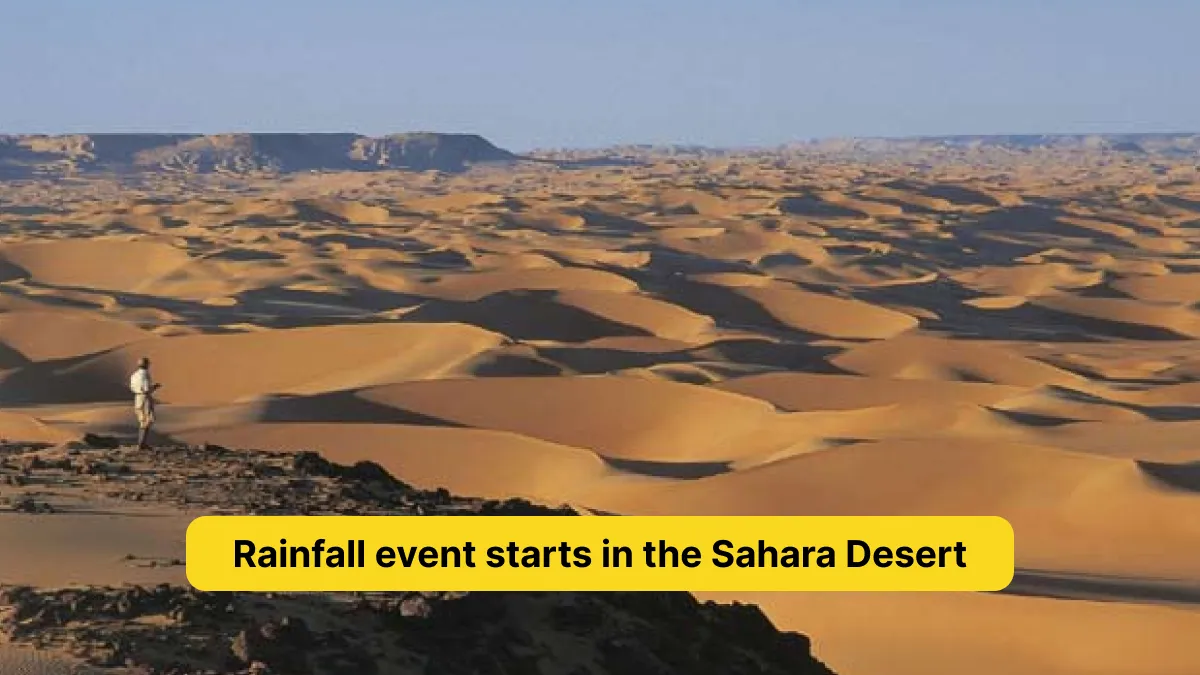August 28, 2024
In an unusual turn of events, the Sahara Desert, known for its arid conditions, is experiencing unexpected rainfall. This rare occurrence has left meteorologists and residents alike astonished. The Sahara, often referred to as the world’s largest hot desert, is famous for its dry climate. However, recent weather patterns are breaking this norm.
Weather Patterns Deviate from the Usual
Historically, the Sahara Desert receives minimal rainfall. On average, it gets less than 3 inches of rain annually. But over the past week, several regions within the desert have reported heavy showers. These rains have been particularly concentrated in areas like northern Chad, southern Algeria, and parts of western Egypt. The downpours are unusual for this time of year, which typically sees very little precipitation.
Weather experts are keenly observing this anomaly. They suggest that shifts in atmospheric patterns could be responsible. According to Dr. Lena Ruiz, a climate scientist, “This sudden change might be linked to larger climate systems. It’s important to monitor these patterns to understand their impact fully.”
Local Impact and Responses
The impact of this unexpected rainfall is already being felt. In some areas, it has led to temporary flooding. For instance, in the town of Tamanrasset in Algeria, streets have been covered with water, disrupting daily activities. Residents are adjusting to the new conditions, with some celebrating the break from the usual heat.
In contrast, the rainfall has also brought positive changes. The lush greenery and blooming vegetation are a welcome sight. Farmers in parts of the Sahara are hopeful that the increased moisture will improve crop yields. “We rarely get this much rain,” said Ahmed Idris, a local farmer. “It’s a blessing for our crops.”
Environmental Effects
The sudden influx of water is having notable effects on the environment. Desert plants and wildlife are benefiting from the increased moisture. Plants that typically remain dormant during the dry season are now showing signs of growth. Additionally, animals that thrive in arid conditions are becoming more active, taking advantage of the new food sources.
However, this rainfall could also pose challenges. Heavy rains can lead to erosion, especially in regions that are not accustomed to such conditions. Soil erosion might affect the stability of the desert landscape. Scientists are concerned about the long-term effects of this rainfall on the desert ecosystem.
Future Predictions and Research
As this weather event unfolds, scientists are making predictions about its duration and impact. Currently, forecasts suggest that the rainfall might continue for a few more weeks. However, the situation is fluid and could change rapidly.
Research is ongoing to determine the long-term implications of these rains. Experts are studying satellite images and weather models to predict future patterns. The goal is to understand how such unusual weather events might affect the Sahara and similar arid regions around the world.
Global Attention
This unusual weather event has attracted global attention. News outlets and weather organizations are reporting on the situation, highlighting its rarity and significance. The Sahara Desert, often seen as a symbol of extreme dryness, is now a focal point for discussions about climate variability.
The event serves as a reminder of the dynamic nature of our planet’s climate. It underscores the need for ongoing research and monitoring. As Dr. Ruiz puts it, “Understanding these changes is crucial for predicting future climate patterns and preparing for potential impacts.”
Conclusion
In summary, the Sahara Desert is experiencing an unexpected rainfall event that has surprised many. This unusual weather pattern brings both challenges and opportunities. While some areas face flooding, others are benefiting from the increased moisture. As scientists continue to study this phenomenon, it highlights the importance of monitoring climate changes and their effects on our environment.
